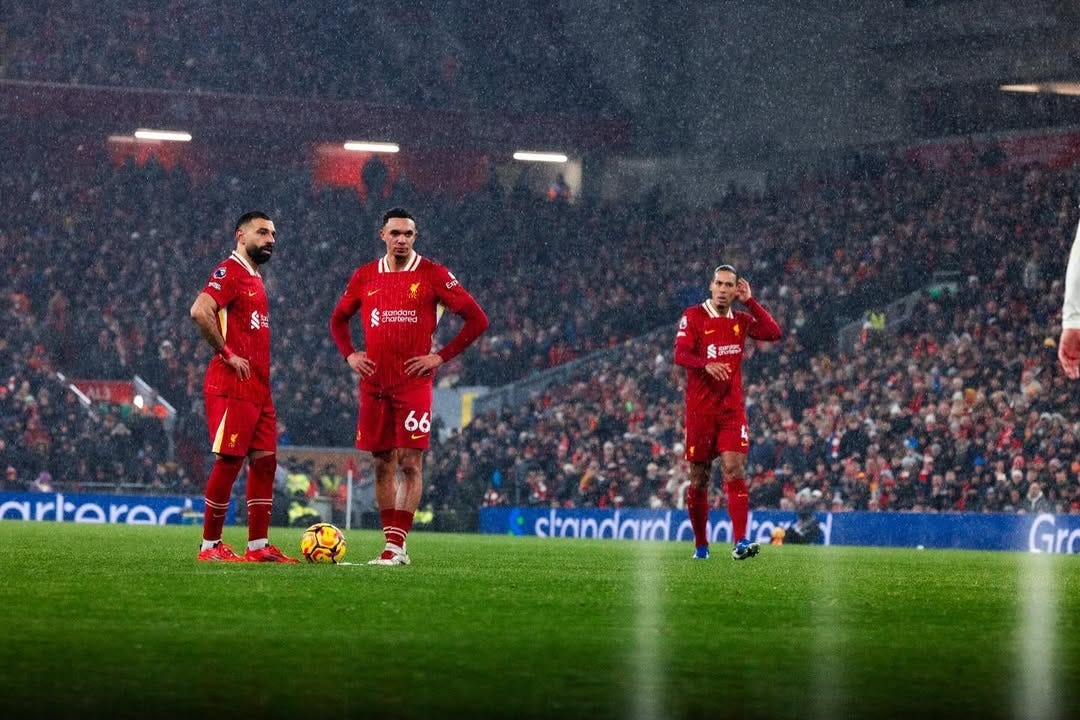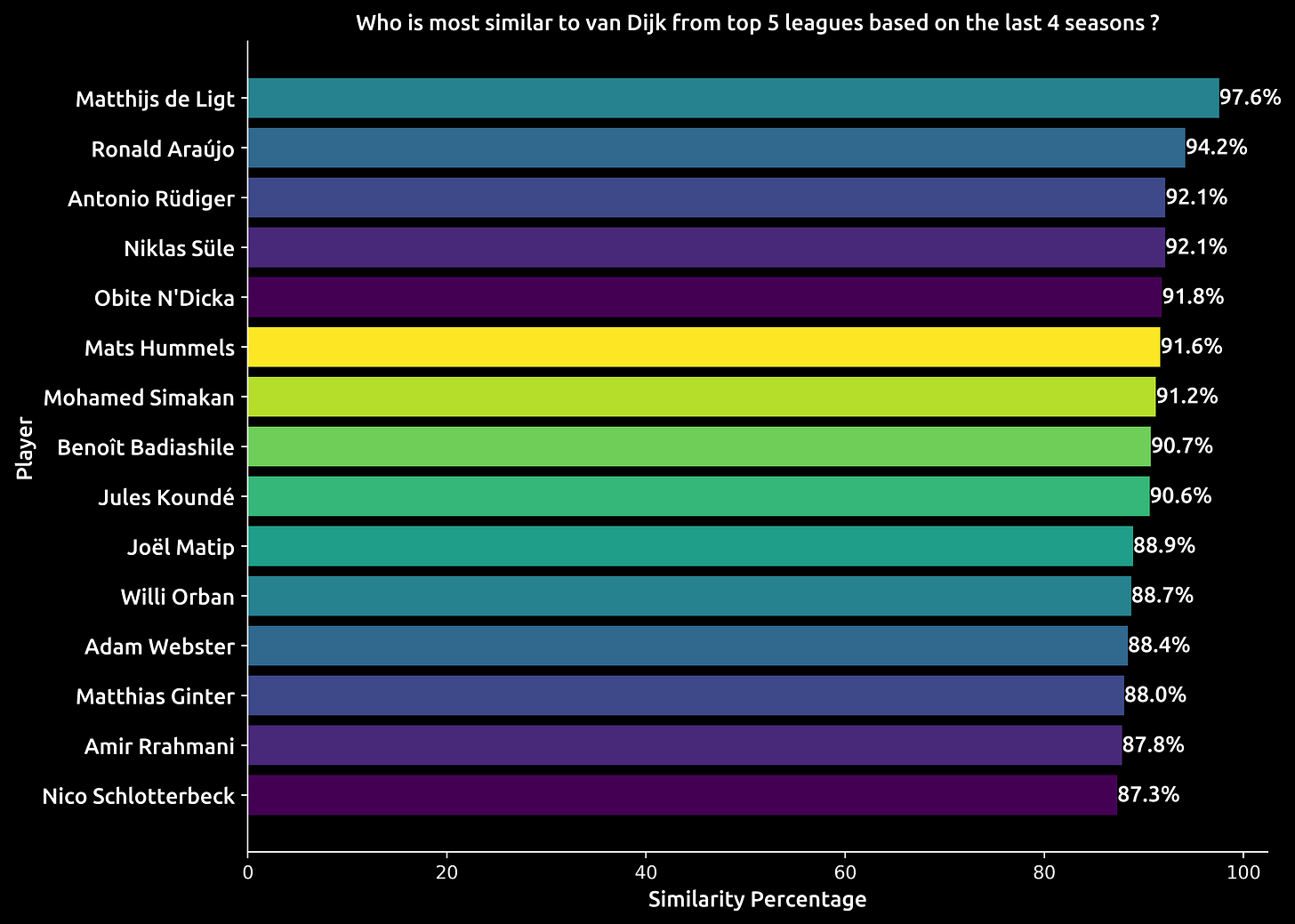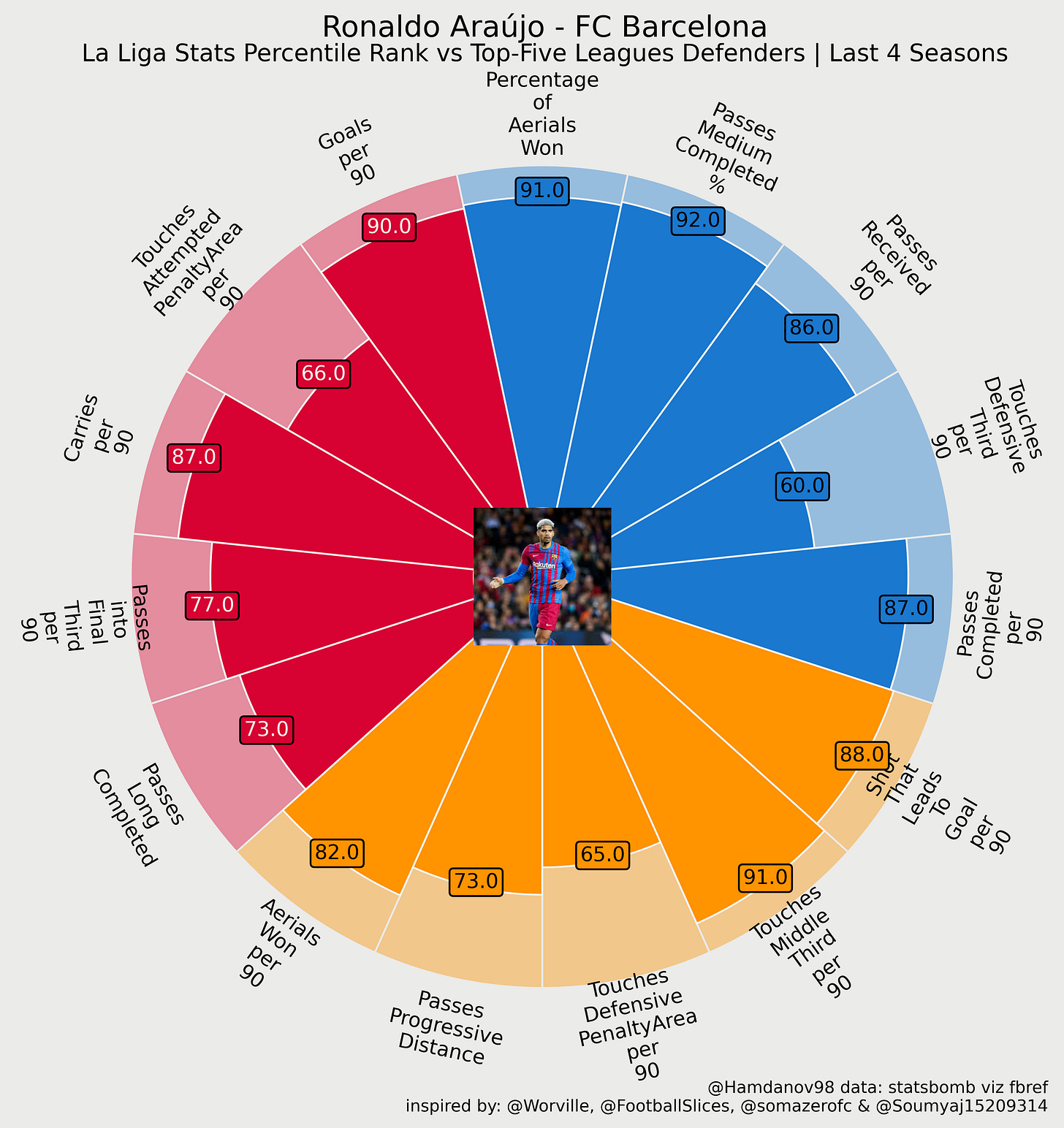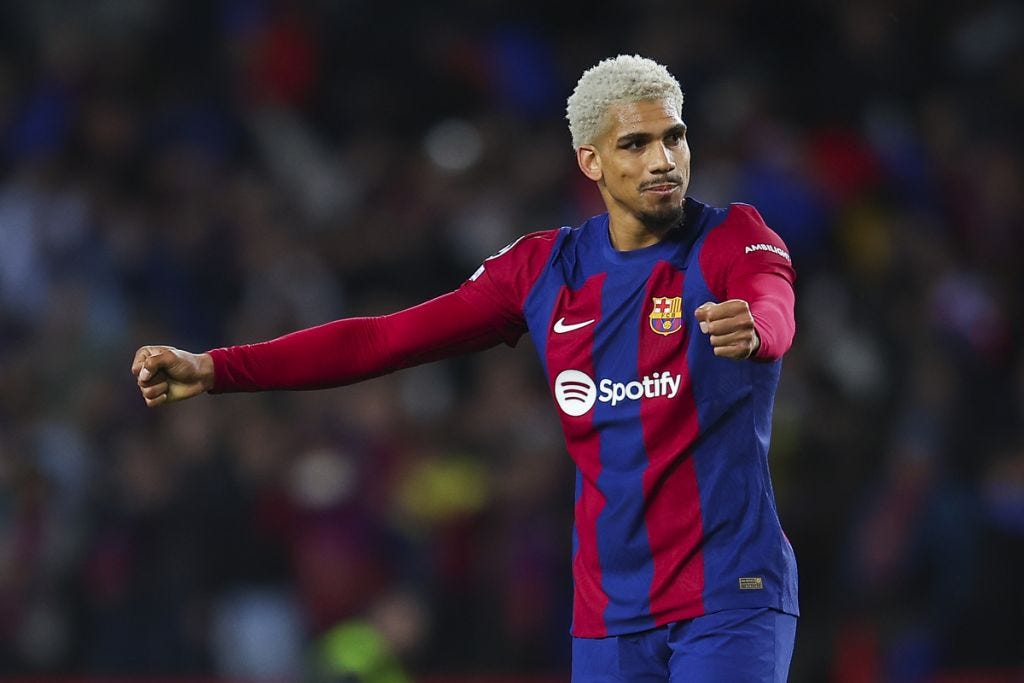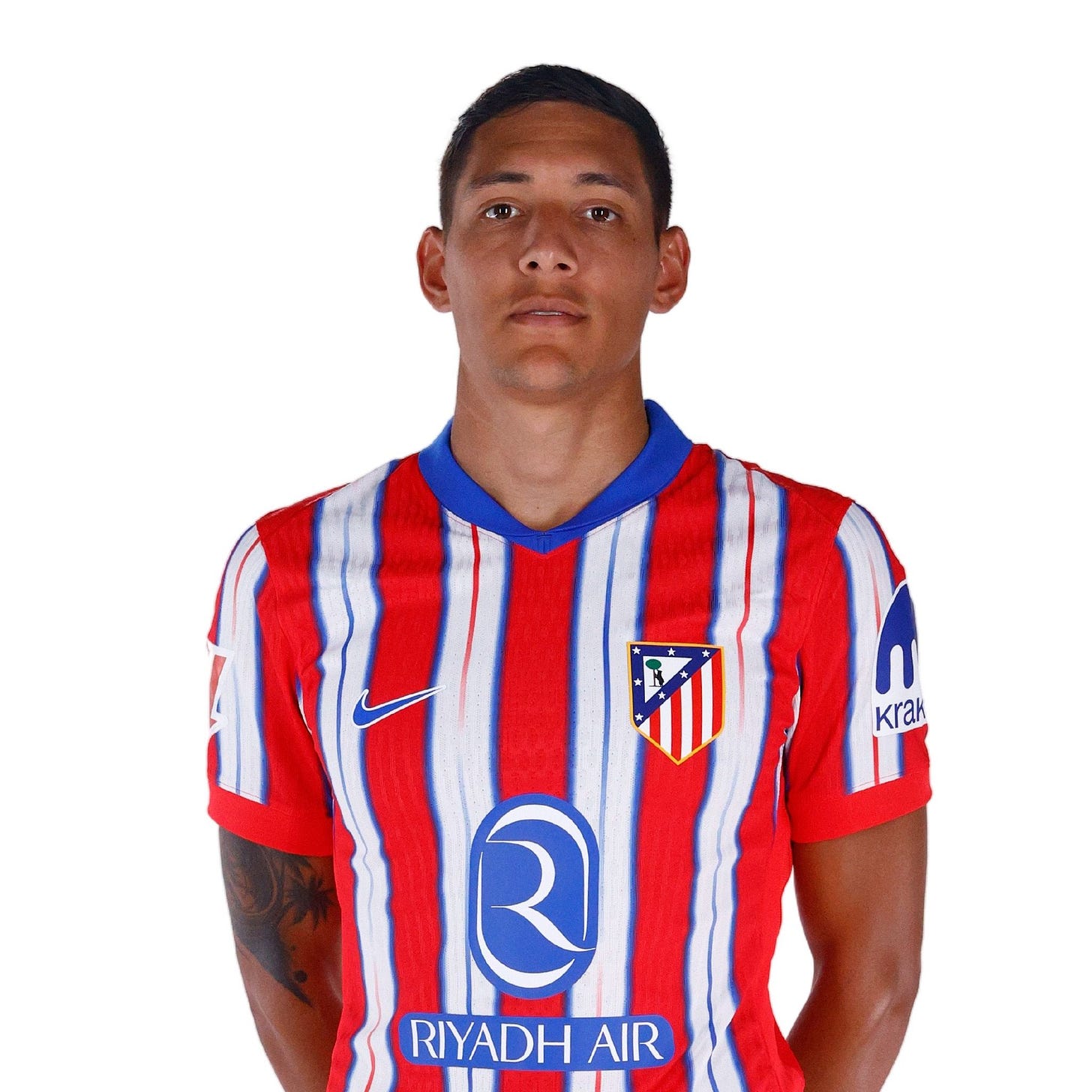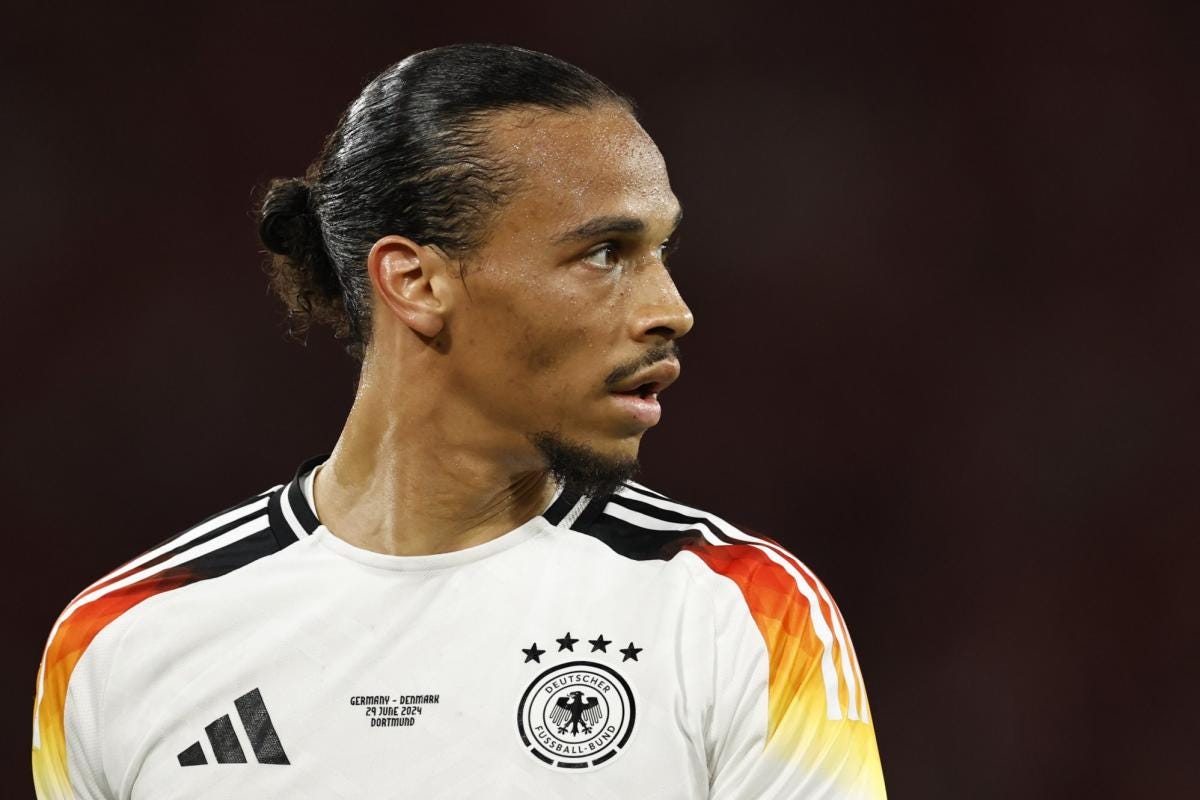Rebuilding Liverpool 2025/26: Replacing Pillars Using Data
Addressing Contract Uncertainties and Proposing a Future-Ready Lineup for Anfield
Introduction
When Arne Slot stepped into Jurgen Klopp’s shoes (No pressure, right?) as Liverpool’s new manager, expectations weren’t as big. Following Klopp’s remarkable 2023/24 campaign—where Liverpool overachieved despite a bittersweet ending—Slot has somehow managed to take the team to even greater heights.
Fast forward to January 2025, and Liverpool are sitting proudly at the top of the Premier League table and leading the new Champions League format standings. Slot’s tactical tweaks have brought a new dimension to the team. While Klopp’s iconic "Heavy Metal Football" was exhilarating, it often teetered on chaos. Slot has refined this approach, blending elite control with bursts of high-tempo play when needed, creating a more balanced and dominating Liverpool.
However, despite the success, storm clouds are gathering over the AXA Training Centre. Three key players—Alexander-Arnold, Van Dijk, and Salah—are heading into the summer as potential free agents. Together, they form the backbone of the team, and uncertainty over their futures is becoming an unwelcome distraction. Public statements around their contracts have only added fuel to the fire, threatening to derail the season’s momentum.
But what if Liverpool had to prepare for the worst-case scenario? In this article, we’ll dive into our Moneyball-inspired approach to identify sensible replacements for these pivotal players, ensuring Liverpool’s future remains as bright as their present. Let’s get started!
How I Approached Fixing Liverpool
The elephants in the room are clear: the three key players we highlighted in the introduction—Alexander-Arnold, Van Dijk, and Salah—are all set to become free agents this summer. Their departures would leave massive voids in Liverpool’s spine, and addressing these potential losses is critical for maintaining the team’s dominance.
But there’s another area of concern: the left-back position. Andrew Robertson, a Liverpool legend and arguably their best-ever left-back, has seen a noticeable dip in form. While Robertson was once among Liverpool’s most pivotal players alongside Trent Alexander-Arnold, his recent performances have highlighted weaknesses that opponents have increasingly exploited. Kostas Tsimikas, a capable backup, has done well in a rotational role, but he doesn’t seem to be the long-term solution. An upgrade here feels necessary, and I’ve delved into Robertson’s numbers to identify potential replacements.
With these challenges in mind, I’ve focused on finding data-driven replacements for the following positions:
Center-back to potentially replace Van Dijk.
Left-back to revitalize the flank.
Right-back to potentially replace Alexander-Arnold.
Wide forward to potentially replace Salah.
Let’s dive into the numbers and explore what the data reveals about Liverpool’s future possibilities.
Results
1- Robertson’s Replacement
If you’ve read Ian Graham’s How to Win the Premier League, you’ll know that Liverpool initially viewed Andrew Robertson as an above-average Premier League left-back. Concerns were raised about his defensive capabilities during recruitment, but Klopp reassured the team that Liverpool’s system relied heavily on offensive contributions from full-backs, and structural adjustments could compensate for any defensive shortcomings.
What happened next exceeded everyone’s expectations. Robertson didn’t just settle into the role—he redefined it. Far from merely being “above average,” he emerged as one of the best left-backs in the world. His relentless energy, elite-level output, and defensive reliability made him indispensable in Klopp’s system. At times, he even laid claim to being the best left-back in the world, seamlessly balancing offensive runs with defensive responsibilities.
However, even legends have their dips. In recent times, Robertson’s performances haven’t hit the same heights. His trademark energy and reliability have waned, and while his past achievements are undeniable, it’s clear that Liverpool may need to prepare for the next chapter at left-back.
When I saw Robertson’s recent numbers, my reaction was simply, oooch. And keep in mind—this analysis doesn’t even include his peak seasons from 2018/19 and 2019/20. Imagine if those legendary campaigns were factored in!
But we can’t dwell on the past. It’s time to focus on the present and future. Using these numbers as a benchmark, let’s dive into the data and explore potential replacements who can bring fresh energy, defensive stability, and offensive dynamism to Liverpool’s left flank.
As expected, a few big names popped up during the search for Robertson’s replacement, but for me, all signs point to Caio Henrique, the Monaco left-back. I’ve been genuinely impressed by his profile. Not only does he excel in the offensive and defensive metrics required for a modern full-back, but he also has the technical ability and versatility that would make him a great fit for the Premier League.
What’s intriguing about Caio Henrique is how he’s flown under the radar despite consistently strong performances. Monaco are quietly making waves, especially with their recent resurgence in Ligue 1 and the Champions League. Henrique has been central to their success, showcasing his ability to adapt to high-pressure situations and contribute significantly in both attack and defense.
Based on the numbers and the eye test, he seems like a natural heir to Robertson—capable of slotting into Liverpool’s system while adding his own unique flair.
A pacey, physical, and balanced left-back, Caio Henrique fits the mold perfectly for Slot-ball. His dynamism and ability to seamlessly transition between attack and defense would revolutionize Liverpool’s left flank almost instantly. Henrique’s technical ability, tactical intelligence, and engine make him an ideal choice for the demands of the Premier League.
Whether it’s delivering pinpoint crosses, supporting midfield rotations, or tracking back to handle counterattacks, Henrique checks all the boxes. He’s the type of player who could lift any team he joins, and for Liverpool, he’s my clear pick to take over the left-back position at Anfield.
2- Van Dijk’s Replacement
Remember the chaotic days of Liverpool’s thrilling 4-3 wins, where every game felt like a rollercoaster? Goals were flying in at both ends, and while it was entertaining, Liverpool's defense often looked like it was hanging by a thread. Then came Virgil Van Dijk, and everything changed.
Van Dijk didn’t just improve Liverpool’s defense—he transformed it. Clean sheets became a regular feature, and Liverpool’s performances exuded a newfound sense of control, especially after the arrival of Alisson. Together, they anchored a defensive line that became nearly impenetrable. But for me, much of this stability stems from Van Dijk. His reliability, leadership, and sheer presence elevated Liverpool to the next level, becoming a cornerstone of their success under Klopp.
Let’s not forget the adversity he overcame. Following a devastating ACL injury that sidelined him for an entire season, Van Dijk returned with the same composure and dominance, as if he had never been away. That resilience only adds to his legacy.
Without question, Van Dijk will go down as one of the greatest defenders in Premier League history—a leader, a game-changer, and a true legend of the game.
I’ll say it again—consider how limited the data set is for the last four seasons. Now imagine if we included Liverpool’s peak years (2018/19 and 2019/20), when defeating them felt impossible and scoring against their defense was a monumental task. During those seasons, Van Dijk was at the heart of a defensive masterclass, leading a unit that looked impenetrable.
Even more remarkable is that Van Dijk missed the majority of the 2020/21 season due to a serious ACL injury, and yet his recent numbers still hold up impressively. This context only amplifies his consistency and impact.
Now, let’s dive into the data and see what it reveals about his contributions and what Liverpool might need to look for in a potential successor.
Some of the names that surfaced in my analysis were unsurprising, with a mix of established veterans and promising talents making the shortlist. A standout mention goes to Mats Hummels, who still appears on many lists as a reliable defensive option. Roma’s move to secure Hummels was a smart piece of business—his experience is invaluable, even at this stage of his career.
However, for Liverpool, the need may not be for an older, experienced player. Instead, my pick is someone already seasoned on big stages and primed for greatness: Ronald Araújo.
Araújo is a rare combination of modern defensive attributes.
Champions League Experience: Regularly playing at the highest level, he’s accustomed to the pressures of elite football.
Ball Progression: A strong carrier of the ball, essential for a possession-based or transition-heavy system.
1v1 Defensive Ability: Araújo thrives in duels, showcasing strength and precision.
Pace for a High Line: His speed allows him to seamlessly slot into Liverpool’s high-press system.
While he sometimes shows a tendency to go into tackles hastily, this is an area that can be refined with proper coaching—making him a prime candidate to evolve into an elite defender. It’s unfortunate we didn’t get to see how Araújo might have performed under Hansi Flick due to his injury, but the opportunity he presents is immense. With just one year left on his contract, Liverpool would be wise to seize the chance to bring him in. Araújo ticks all the boxes for what a modern elite team like Liverpool needs at the back.
This combination of attributes truly makes Ronald Araújo an outstanding pick. His performances with Uruguay under Marcelo Bielsa have only solidified his reputation as a top-tier defender. Despite Bayern Munich’s interest, an untimely injury thwarted what could have been a marquee move. But who’s to say fate doesn’t have something better in store? A move to Anfield might just be on the horizon.
Now, imagine Araújo lining up alongside Ibrahima Konaté, both pushing high, squeezing the pitch, and completely suffocating opposition attacks. It would be a throwback to Klopp’s early days at Liverpool—the aggressive, relentless pressing style we all loved—but this time with a more solid defensive foundation. No more chaotic 4-3 games; instead, controlled, dominant performances that leave opponents frustrated and scoreless.
Araújo’s potential move to Liverpool isn’t just exciting—it feels like the perfect match.
3- Trent’s Replacement
Most media outlets agree that Trent Alexander-Arnold is the most likely of Liverpool’s big names to leave. While opinions on his potential departure vary, the fact remains that it’s his choice to make—and with Real Madrid in the mix, it’s hard to deny the appeal of such an iconic club, even for a local lad who came up through Liverpool’s academy.
Trent’s story is nothing short of inspiring. From a young Scouser to a global star, he has etched his name into Liverpool’s history, winning every major title possible under Klopp. Yet, despite his immense contribution, it feels like he doesn’t always receive the same level of appreciation as club legends like Steven Gerrard. For me, he absolutely deserves to be in that conversation.
His profile is undeniably unique. Klopp himself has highlighted Trent’s "risk-reward" approach, which makes him such a potent attacking force. Yes, he’s been criticized for his defensive vulnerabilities and occasional struggles against certain setups, but when Liverpool take the game to their opponents, Trent becomes an unmatched weapon. His vision, passing range, and ability to dictate play from deep make him one of the most dangerous full-backs in football.
Looking ahead, it will be fascinating to see how Trent transitions into a more prominent role for his country. With Kieran Trippier retired from international duty and Kyle Walker showing signs of decline, the stage is set for Trent to truly shine on the international stage, much like he has for Liverpool. Whether he stays at Anfield or moves on, there’s no doubt Trent’s journey is far from over.
What can I say about these numbers? They speak for themselves. Now imagine Trent Alexander-Arnold showcasing this brilliance at the Bernabéu next season. If Real Madrid can fully understand and leverage his unique strengths, they’ll have a game-changing weapon at their disposal.
But for Liverpool, the focus must shift to the future. Losing Trent would be a monumental change, but the key lies in finding a replacement who can adapt to the team’s system while bringing their own qualities to the table.
Let’s dive into the numbers and explore who could step into Trent’s boots at Anfield.
Seeing Kieran Trippier emerge as a top candidate genuinely made me smile—it might even validate Gareth Southgate’s occasional choice to prioritize him over Trent Alexander-Arnold. However, while Trippier’s quality is undeniable, his age and recurring fitness issues raise questions about his long-term suitability.
Among the options, one name truly caught my attention: Nahuel Molina. Often underrated in discussions about the best full-backs, Molina offers a balanced profile that feels tailor-made for Liverpool’s system. He might not match Trent’s explosiveness in attack, but his respectable offensive output, combined with superior defensive stability, makes him a standout candidate. His experience on the highest level with Atlético Madrid and Argentina’s national team has honed his tactical discipline, making him a reliable and consistent performer on the big stage.
A special mention also goes to Arnau Martínez, a young and rapidly improving talent at Girona. His potential is clear, and he’s certainly one to watch for the future. However, for Liverpool’s immediate needs, Molina stands out as the ideal choice—offering a blend of experience, reliability, and adaptability that could ensure the right-back position remains a strength at Anfield.
While Conor Bradley was a pleasant revelation last season and did an admirable job filling in for Trent during his injury, I still believe Nahuel Molina is the safer and more balanced option. His experience at the top level means he wouldn’t need much time to adapt or hit the ground running at Anfield.
Molina’s excellent tactical awareness and technical ability make him a seamless fit for Liverpool’s system. His understanding of positional play and his ability to contribute both defensively and offensively ensure that he can maintain Liverpool’s dominance on the right flank. If Liverpool can secure him for a reasonable price, he would undoubtedly be a valuable asset for years to come—a dependable and intelligent addition to the squad.
4- Salah’s Replacement
For me, Mo Salah is the best right winger I’ve ever seen in the Premier League. His evolution as a player is nothing short of extraordinary. From being a relentless goal scorer to becoming a creative force with his assists, Salah’s ability to adapt his game while remaining a consistent threat is remarkable.
The story of how Liverpool signed Salah, as outlined in Ian Graham’s How to Win the Premier League, makes his success even more compelling. Klopp initially preferred Julian Brandt, but Liverpool’s recruitment team, guided by data, pushed for Salah. They identified him as a player with an exceptional ability to generate goal-scoring opportunities through his runs. At the time, Salah was excelling with Roma, yet no Premier League teams were pursuing him. Why? Because he was branded a "Premier League failure" due to his time at Chelsea.
Let’s pause on that for a moment. How many players have "failed" at Chelsea, only to thrive elsewhere? Kevin De Bruyne is the perfect example, and we all know how that turned out. The reluctance of other clubs to chase Salah because of his Chelsea stint was both shortsighted and baffling, but it allowed Liverpool to make one of the smartest transfers in their history.
Salah has been worth every penny Liverpool paid for him—and then some. His consistency, work ethic, and knack for delivering in crucial moments have solidified his legacy not just at Anfield, but in the Premier League as a whole. And now, as discussions about his contract extension arise, it’s hard to argue he isn’t worth every cent he’s asking for. Salah has been pivotal to Liverpool’s success, and keeping him would ensure that success continues.
These numbers are simply out of this world. Even during Liverpool’s off-seasons, Mo Salah has maintained an incredible level of consistency—a testament to his professionalism and quality. While other players might dip alongside the team, Salah’s stability has been a constant for Liverpool, carrying them through tough periods and delivering when it matters most.
If Salah continues this season’s form and leads Liverpool to a major title, a Ballon d’Or claim doesn’t seem so crazy. He’s proven time and time again that he belongs in the conversation for the best players in the world.
But as we look ahead to the possibility of his departure, the challenge is finding a replacement who can even come close to his impact. Let’s dive into the data to see who might be able to fill those massive boots.
The potential replacements for Mo Salah reveal a mix of strikers, wide forwards, and even creative playmakers—a testament to Salah’s versatility and unique contributions. This wasn’t an easy choice, but after weighing the options, I went with a pick that strays a bit from the Moneyball philosophy: Leroy Sané.
Here’s why:
Sané’s contract situation at Bayern Munich and his reduced playing time lately make this a prime opportunity for Liverpool. While he might demand high wages, it’s important for him to be realistic—his recent performances haven’t justified being one of Bayern’s top earners. If Liverpool could negotiate a deal, Sané could be a valuable addition to their squad.
Now, let’s be honest: no one can match Salah’s output or impact directly. But Sané offers qualities that can help Liverpool transition into a new era. His ability to create assists, his pace, and his intelligent movement can open up opportunities for others to shine. Salah’s replacement doesn’t have to be a one-for-one match. Instead, as with Kylian Mbappé’s role at PSG, replacing a player like Salah should be viewed as a collective responsibility—a chance for the team as a whole to step up and share the creative and goal-scoring burden.
Sané might not replicate Salah’s numbers, but he has the tools to contribute significantly, ensuring Liverpool remain competitive at the highest level.
While Leroy Sané’s goal-scoring numbers might not match Salah’s, his skill set, pace, and creativity more than make up for it. Liverpool have a proven track record of elevating forwards’ outputs, so it’s easy to imagine Sané thriving at Anfield. In many ways, Liverpool could "save" him, unlocking his potential and maximizing his contributions.
Sané’s experience in the Premier League with Manchester City is another advantage. He knows the league, the pace, and the intensity, which means he’d likely adapt quickly under Arne Slot. Soon to be 29, he’s entering his final peak years, making this the perfect time to bring him in and get a few high-impact seasons out of him.
A pacey, direct forward who can operate effectively on either flank, Sané has all the tools to excel in Slot’s system. His ability to take on defenders, deliver quality crosses, and unleash powerful shots makes him a match-winner when utilized correctly. Under the tactical guidance of Slot, Sané could shine as a dynamic force, helping Liverpool maintain their offensive edge while bringing a fresh dimension to their attack.
My Ideal Line Up for Liverpool
Now after we’ve addressed the key positions for Liverpool it’s time to point the line up for the next seasons and we already know that Liverpool have prepared a successor for Alisson’s in Mamardashvili so let’s put up the line up.
This lineup in Slot’s preferred 4-2-3-1 formation has a lot of potential, especially with the tactical flexibility built into the system. While Araújo might initially struggle with passing angles on the left side, his adaptability and defensive awareness should allow him to cover for Caio Henrique effectively. Similarly, Molina on the right can perform well in this setup, offering defensive stability and the option to form a situational back three when either full-back pushes forward. The dual pivots (Mac Allister and Gravenberch) provide the necessary cover, ensuring the team remains balanced in transitions.
Sané is a wildcard in this formation. His ability to play on either flank gives the team a dynamic edge, and on his best day, he’s practically unplayable. Pairing him with Szoboszlai in the central creative role and Diaz up top adds layers of unpredictability and pace to the attack.
While this lineup may seem underwhelming at first glance compared to Liverpool’s past teams, the combination of talent and tactical cohesion could make it a serious contender at the highest level. With the right coaching and environment, this squad has all the ingredients to compete for silverware and thrive under Slot’s philosophy. It’s modern, balanced, and has just enough flair to surprise opponents.
This team has a solid foundation. The defensive stability provided by Araújo and Konaté, combined with the attacking versatility of Sané, makes this a well-rounded side. It may require some time for the pieces to click, but once they do, this lineup could be a force to reckon with.
Conclusion
As Liverpool prepare for the possibility of life without some of their greatest ever players, this data-driven approach offers a roadmap to maintaining their competitiveness. Replacing the likes of Van Dijk, Robertson, Alexander-Arnold, and Salah is no small task, but the proposed lineup balances experience, youth, and adaptability.
The inclusion of players like Caio Henrique, Ronald Araújo, Nahuel Molina, and Leroy Sané brings a mix of proven quality and untapped potential. While this lineup may not immediately replicate the heights of Klopp's peak years, it offers a solid foundation for Arne Slot to build upon. The tactical flexibility of a 4-2-3-1 system, with versatile players who can adapt to situational changes, ensures Liverpool remain a dynamic and unpredictable force.
This squad represents more than just replacements—it symbolizes a new era. With time, cohesion, and Slot’s guidance, it has all the tools to compete at the highest level, bringing Anfield faithful hope of more silverware in the years to come. The journey to success is never easy, but with the right mix of talent, strategy, and determination, Liverpool can confidently embrace the challenges ahead.
What do you think of this lineup? Who would you suggest using your data-driven approach to strengthen the squad?
Code and Implementation
For those interested in the technical details, you can find the complete code for this project on my GitHub repository.
Call to Action
If you're interested in football analytics or data science, I encourage you to check out the full project on GitHub. Feel free to experiment with the code, apply it to your favorite team or other struggling teams, and share your findings. Let's continue to push the boundaries of football analysis together!
Enjoy the content, and I'll see you on the dugout!
Support My Work and Join the Journey
Support the journey and take your first steps into football analytics! Visit my Payhip store for exclusive resources designed to kickstart your path to becoming a top-tier football analyst.
Embrace the process, it’s in the learning journey where your true potential shines. Your support not only helps you grow but also allows me to keep creating valuable content for the community. Together, let’s shape the future of football analytics


